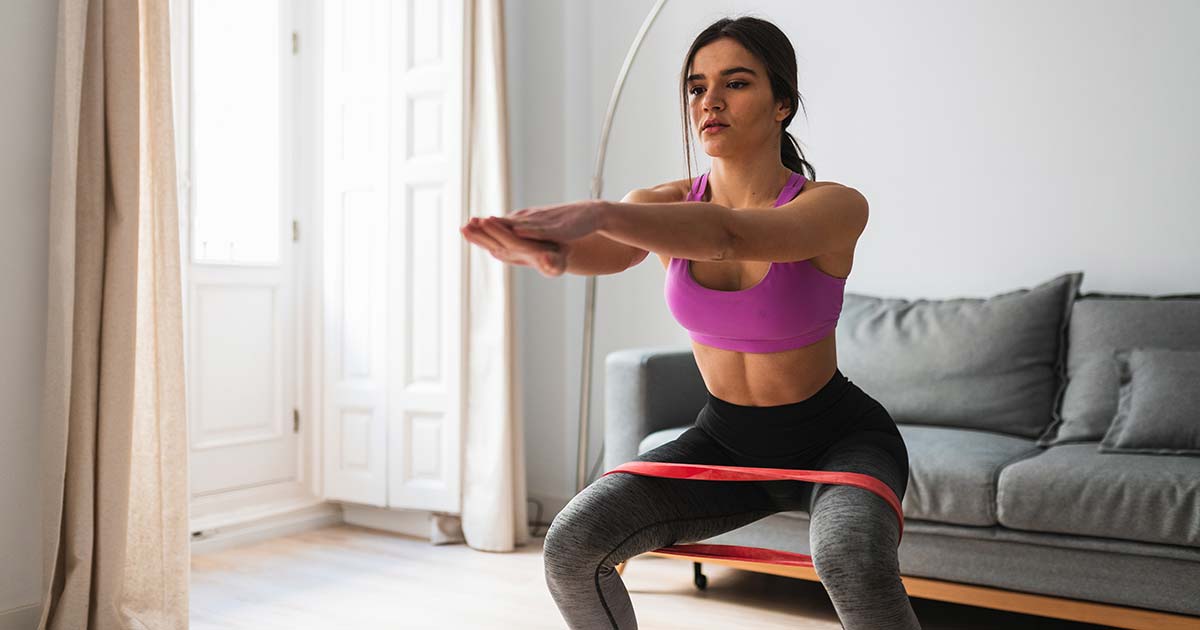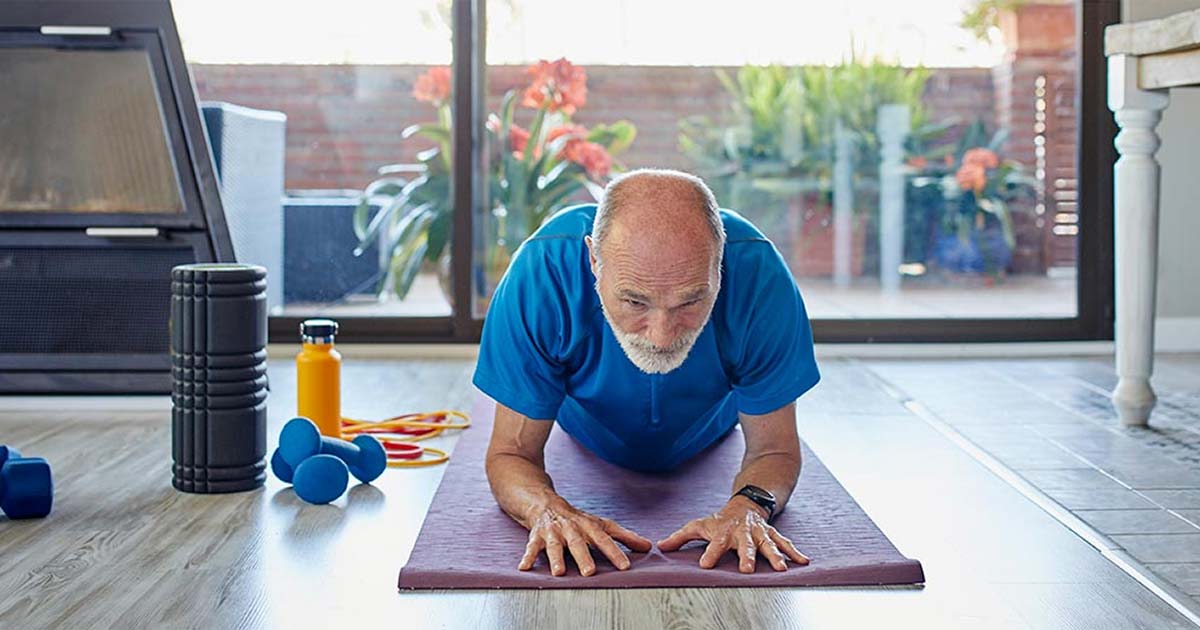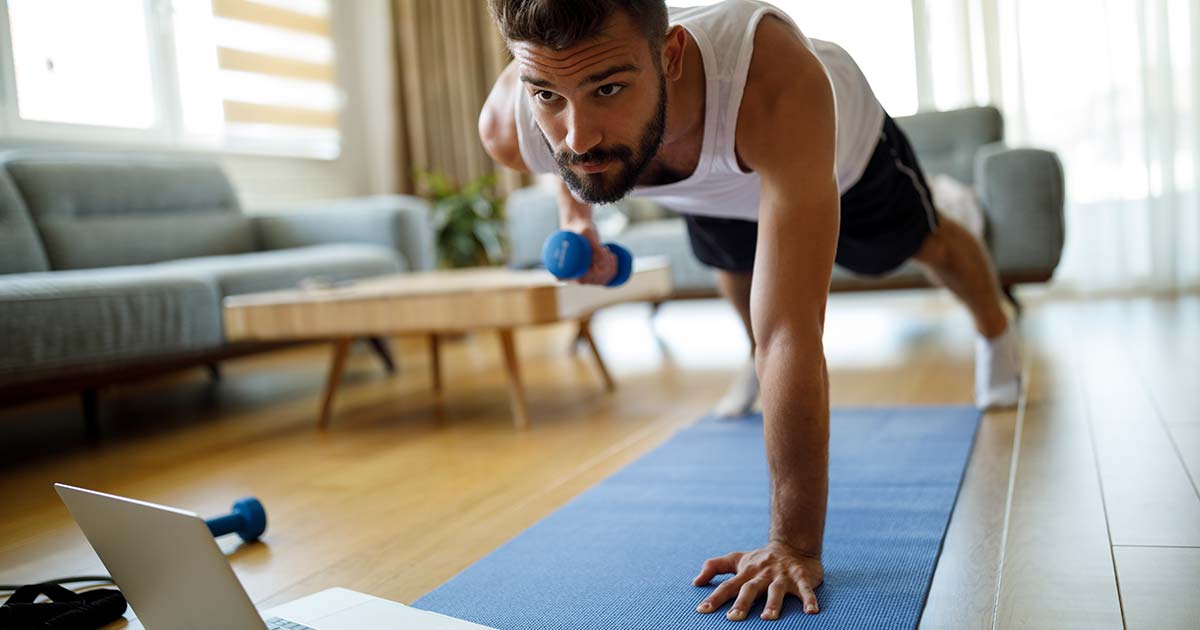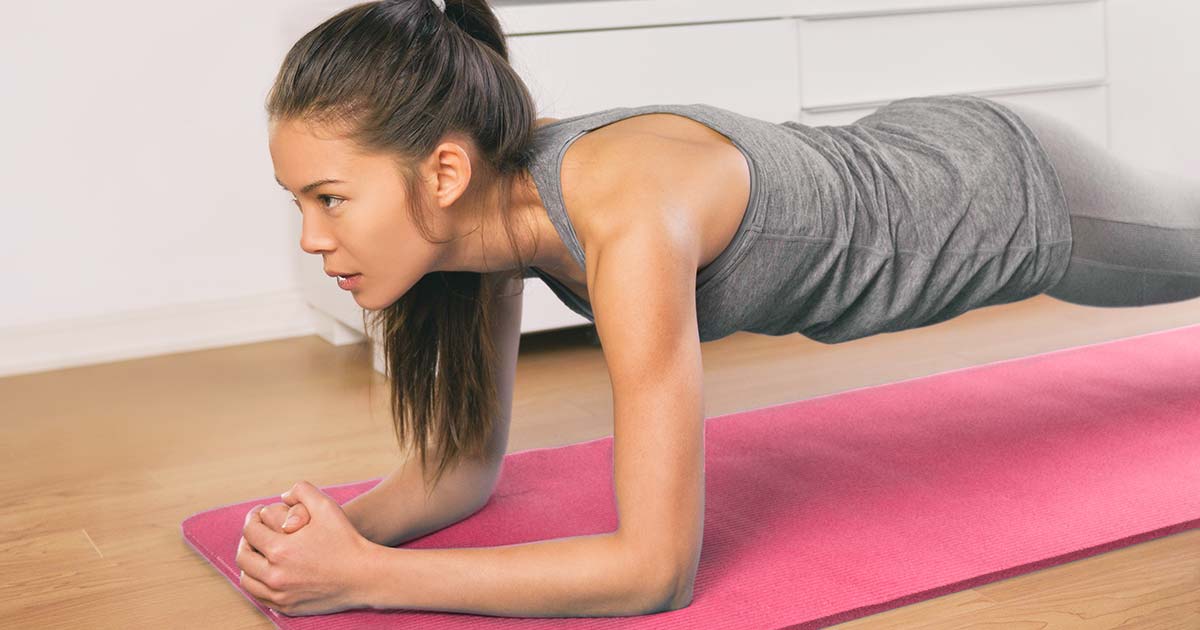Resistance Training at Home
Advice to improve your movement, fitness, and overall health from the world's #1 in orthopedics.

Resistance Training Without the Weights
A comprehensive fitness program is more than just cardio. Resistance training should be a big part of fitness and overall health for all people regardless of age, sport or hobby.
The good news is that resistance training doesn't just mean weight machines, dumbbells and kettlebells. You can also use equipment such as resistance bands, which have been shown to increase muscle mass and strength just like free weights do. If you don't have bands, some simple tweaks to make your home routine more challenging can still deliver big benefits.
Building a Resistance Routine
The National Strength and Conditioning Association (NSCA) recommends doing resistance training two to three days per week on non-consecutive days using a variety of exercises and equipment. Try to allow 48 hours in between workouts using the same muscle groups.
For any type of resistance exercise, always maintain good form, alignment and control during all reps.
Resistance Band Basics
Resistance bands are very versatile and can be used for a wide range of exercises that target all major muscle groups. Bands are inexpensive and lightweight, don't take up a lot of space and are easy to use both at home and while you're traveling.
Different brands and types of resistance bands may use different color schemes to show levels of difficulty. Generally, light-colored bands provide less resistance, while dark-colored bands are more challenging. if you are new to using bands, start with a color that provides enough resistance to allow you to perform about 10-15 repetitions before you can't do any more.
- For the lower body, you'll get the best bang for your buck with a traditional squat. It's a fundamental movement and involves multiple joints. Place a resistance band above your knees before doing a squat like you normally would. Remember to press your knees into the band throughout the exercise and move slow and controlled.
- For the upper body, try a row. Wrap the band around a doorknob or another type of secure anchor. Face the band and pull it in toward your body, bringing your shoulder blades towards each other. Extend your arms back out with control.
- Your core and hip can benefit from bands too. In a side plank position, place a band above your knees and keep them bent as you raise up on your elbow. Extend your arm, raise and lower your top knee and keep your hip steady.
Alternatives to Weights and Resistance Bands
If you don't have weights or bands at home and still want to get in some resistance training, you can add weight to your workout in other ways. Some easy at-home items to incorporate are detergent bottles or full water jugs, heavy cans, a bookbag filled with books or even your kids. (Don't laugh — it works!)
Slow it Down, Pulse It Out (aka Time Under Tensions)
Another at-home resistance strategy to use is known as time under tension. By slowing down your moves as much as you can, adding a hold in the middle or pulsing the movement, you'll up the intensity significantly
You can also focus on working the eccentric part of an exercise. Think of it as the second half of the move. With a bicep curl, for example, it would be after you've curled your arm up, when you're lowering it down. For pull-ups, it's the lowering portion of the exercise as well. By moving at a slow and controlled pace during this phase, you'll build strength that will improve the beginning half of the movement.
Make Your Workout More Complicated
By combining the upper and lower halves of your body—say, by doing a squat with a curl or a lunge with an overhead press—you'll get more benefit out of a single move.
Most exercises move along one plane—backward and forward, like with a tricep extension, side to side, like a lateral lunge or a skater, or rotational, like a torso twist. Adding a second plane to any exercise, like "threading the needle" in a side plank, in which your arm passes underneath your raised torso, will make it far more difficult and also test your balance.
Want another way to challenge your balance that is probably the simplest tip of all? Close your eyes. Not being able to use visual cues to orient yourself makes any exercise that much tougher.




